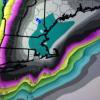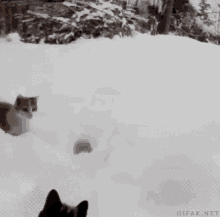
raindancewx
Members-
Posts
3,853 -
Joined
-
Last visited
About raindancewx

Contact Methods
-
Website URL
https://t.co/wsurUGcxYv?amp=1
Profile Information
-
Gender
Not Telling
-
Location:
Albuquerque
Recent Profile Visitors
35,448 profile views
-
2022/2025 had similar monsoon patterns in old Mexico with giant fetches of moisture running up into the Southwest. We've actually been quite wet since late April. 2mm x 30 = 60 mm above average, that's over 2 inches wetter than average for much of Mexico, in the wet season. A lot of decent snowfall years for the West seem to follow these wetter Junes in Mexico. June 2025 looks like the opposite of the Junes preceding the five best snow years in Philadelphia since 1985. I don't see super favorable outcomes for subtropical moisture feeding nor'easters this winter but we'll see. Sort of expecting a weird winter here - warm but pretty wet. Canadian shows a -PDO neutral those can be pretty good or terrible here - but they're often highly erratic. Not a PDO thing -
-
MJO looks like it is 1/2 to 2/3 magnitude of this time of year in 2022, and off by about 8-12 days for timing. So it's not perfect. It's not like the years have been super different and just snapped into place. Jan 2022 and Jan 2025 both finished super cold, even though the cold entered the US from slightly different origins, and again the timing is off.
-
The Spring globally had at least a passing resemblance globally to 2022. That's consistent with my idea of a pretty wet Summer in the deserts of North America (MX/SW US). The big highs from Japan due east and off the SE US, with low pressure Aleutians to North Dakota are similar. Southern Hemisphere and Asian Plateau setups are pretty different but those aren't super important for us in the Summer in the US. MJO has a passing similarity for late May in 2022 v. 2025 in terms of the wind anomalies by the tropics at about a 1-2 week difference for timing (green on the images for 15N-15S)
-
May 2025 has a decent resemblance to a blend of May 2007/2016 so far. Blazing heat north central us, some coolness south central us, and then muted anomalies by the coasts. Monsoon development looks like it is on schedule in old Mexico. Models have had a cooler than normal Summer for the Southwest. On-time monsoon development is consistent with that idea. Cold/Wet July tends to precede snowy December here. We really haven't had a big December in a while locally - since 2015. It is about due. Cool June is a decent indicator for out-of-winter heavy snow events locally, so will be watching that too. My hunch is we get a warm/wet winter, with cool Fall. But we'll see. Very early.
-
This is an image of the hail storm I was talking about the other day. Pretty amazing demarcation of white v. brown.
-
We had a pretty impressive highly localized hail storm west of the city today. I had to walk through a parking lot to get to my car. The hail and the melt water were deep enough that the water level was above my ankles and fully flooded my shoes. I tripped on the ice about 40 stairs up on an exposed outdoor staircase and promptly fell to the bottom. But I was able to prevent my head from bashing into the ground with my hands. Less than a mile away, no evidence of hail. The storm was about 4-4:30 pm, and the hail has still not fully melted off the car as I look at it now at 10 past 7 pm. I would guess we had 5-7 inches of accumulation of nickel to quarter sized hail even though temps never dropped below the 50s. Hail is nasty business as the ten cuts on my hands will attest to. I've had to get minor roof repairs four times in the 12 years I've owned my home here from hail damage. The little snow event / rainstorm we had in April was nice after such a long, dry winter and early Spring. As always, severe cold shots/snow events here in mid-late Spring are highly tornadic systems down the road. Monsoon looks like it will be active to me, and the long-term models are hinting at a relatively cool Summer here.
-
Good to see my analog method still works. I wasn't crazy for thinking the past winter would be like 2013-14. I never showed my forecast here, but the idea was essentially a bunch of years with alternating waves of expansive record warmth, brief record cold, and more concentrated modest cold. So I expected the 2013-14 aspect of the pattern to persist with less consistency and severity but I expected that was the closest analog overall. Locally I forecast three weeks of severe cold and ten weeks of near-record to record warmth which worked pretty well.
-
The Euro plume last February had the correct idea for the Fall. Same simulation shows an El Nino Fall 2025. We're way way way overdue for a meaningfully wet year out here. I don't think we've had a 12 month period more than 10% above average for precipitation in over a decade. When Nino 1.2 is in the opposite phase of the PDO, the PDO tends to decay toward Nino 1.2, so we've seen ongoing weakening of the -PDO, and that should continue. I don't really consider this event a La Nina. We had atmospheric La Nina conditions for small parts of the winter, but it never sustained from Fall to Spring like in a real event. This winter felt a lot more like a cold Neutral, in terms of where the cold and precipitation went. Cold neutrals tend to be very wet in the South, La Ninas tend to be very dry there. US also tends to have pretty cold winters around the major moves in the PDO cycle (2013-14, 2014-15 after a run of very -years, 1976-77, 1977-78, 1978-79, etc etc)
-
These -10 to -20 dew points we've been seeing in New Mexico, + the arctic air are a pretty potent combination. I don't think the cold would have penetrated with mid-20s down to New Orleans and Pensacola without both. If anything resembling this level of dry air remains in the West when heat and moisture return from the Gulf in 4-8 weeks, it's going to be stupidly tornadic in the mid-south in the Spring.
-
Pretty historic south of I-10 snow in the South fits the bill. I'm sure the Don guy will complain the BAMWX only called for two inches in New Orleans in a couple days or something. I liked 2013-14 in the fall for this winter as an imperfect guide to this winter for four reasons - 1) -WPO in Nov/Dec when it was pretty cold at times for a lot of the US like I expected this year. The idea was this year was a bridge pattern to a neutral/positive PDO future, as 2013-14 was. 2) For those of you in the NE, you didn't really have major storms in 2013-14. Just a lot of small events. Philly had 14 days with an inch of snow but only 5 of those 14 days had over 4 inches. Only 3 of 14 were over 6 inches. That's despite 68 inches of snow. 3) My research from prior winters still supported a lot of cold days (5F below average for the day or colder) in ABQ even with ACE getting higher in October. The data implied 22 cold days for Nov-Feb here. We're at 11 cold days in January following 7 total in Nov (6) and Dec (1). We actually may end on the high side of the correlation...although it does look much warmer after this cold snap. I believe we're seeing the coldest Jan 1-20 locally since 2013, and that's with very warm days in the 60s early month. In Dec 2013 we had 8 or so cold days, and I assumed everything would be delayed a month or so v. 2013, and blended in with the other similar years. 4) The US tends to see one pretty cold winter 0-18 months within both the top and bottom of the solar cycle. Think 2009-2010 and 2013-14 or 2014/15 last time. 1995-96 and 2000-01 or 2002-03 before that. More recently 2020-21. You can go further back - 1976-77 and 1981-82, it holds up in nearly all the cycles. The Bering Sea Rule that I use for 17-21 days lead times on the WPO implied a very -WPO look for most of January would fade late month based on NE Asia storm tracks in December. CPC now has the SW US cold in the 6-10 and 8-14 period, with the East & Plains warm. For Feb-Apr that's the pretty canonical +WPO look, particularly since the breakage of the -WPO should accompany wetter conditions for California. Also forecast now. It's not really -PNA dominance, that's coldest NW and dry in the SW US.
-
This may actually work out pretty well. I was only half kidding when I wrote it.
-
No idea if it will hold, but my basic premise since Summer has been a 2013 / 2021 lag approximating 2024 based on different MJO progression timing. The alignment and magnitudes are not perfect, but it's damn close over a long period for a simple blend with some pretty impressive changes and flips in patterns. Sorry, just got sick of all the stupid bickering with none of you having viable combinations for the winter. I finished my forecast 10/10 like I always do...just decided not to share it. Anyway - since no one is going to do what I asked and delete my profile here I might as give some clarity as I see it. August 2013/2021 v. Sept 2024 - maybe add a degree Sept 2013/2021 v. October 2024 Oct 2013/2021 v. Nov 2024 Nov 2013/2021 v. Dec 2024 - we'll see if this holds. January would go back to a -PNA look based on Dec 2013/2021, with cold north and west. February would be a repeat of Dec - cold east, warm west. March/April then see the Plains pretty cold.
-
I'm completely serious. I want out. I've been trying to delete this for days.
-
Can someone delete my account? I'm done with this site. Thanks.
-
WPO was extremely positive in 2022-23. Looks very negative on the Canadian. Models are garbage at this range. But the WPO was very positive in 2022 in October. Doesn't look like it will be very positive this month. Almost impossible to get record heat in CA/NV in Fall or Spring when the WPO is positive.












